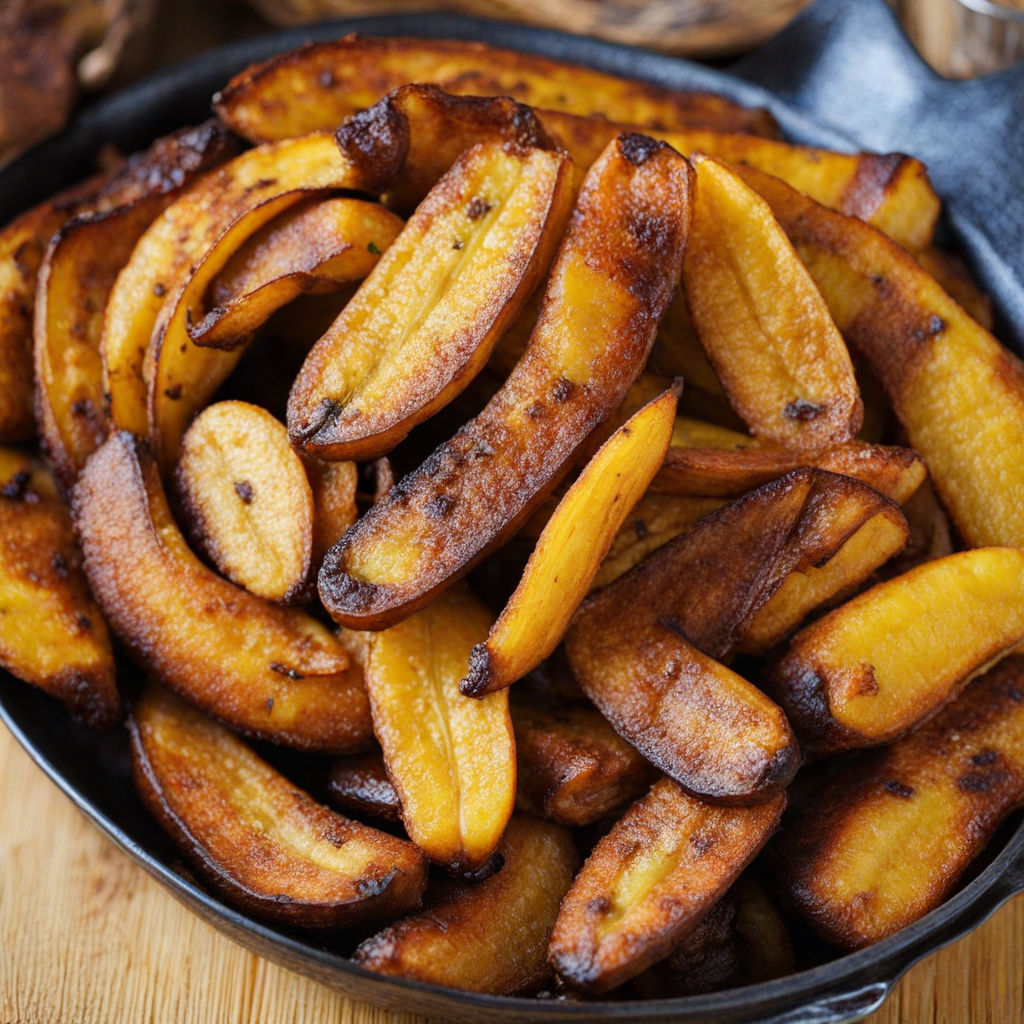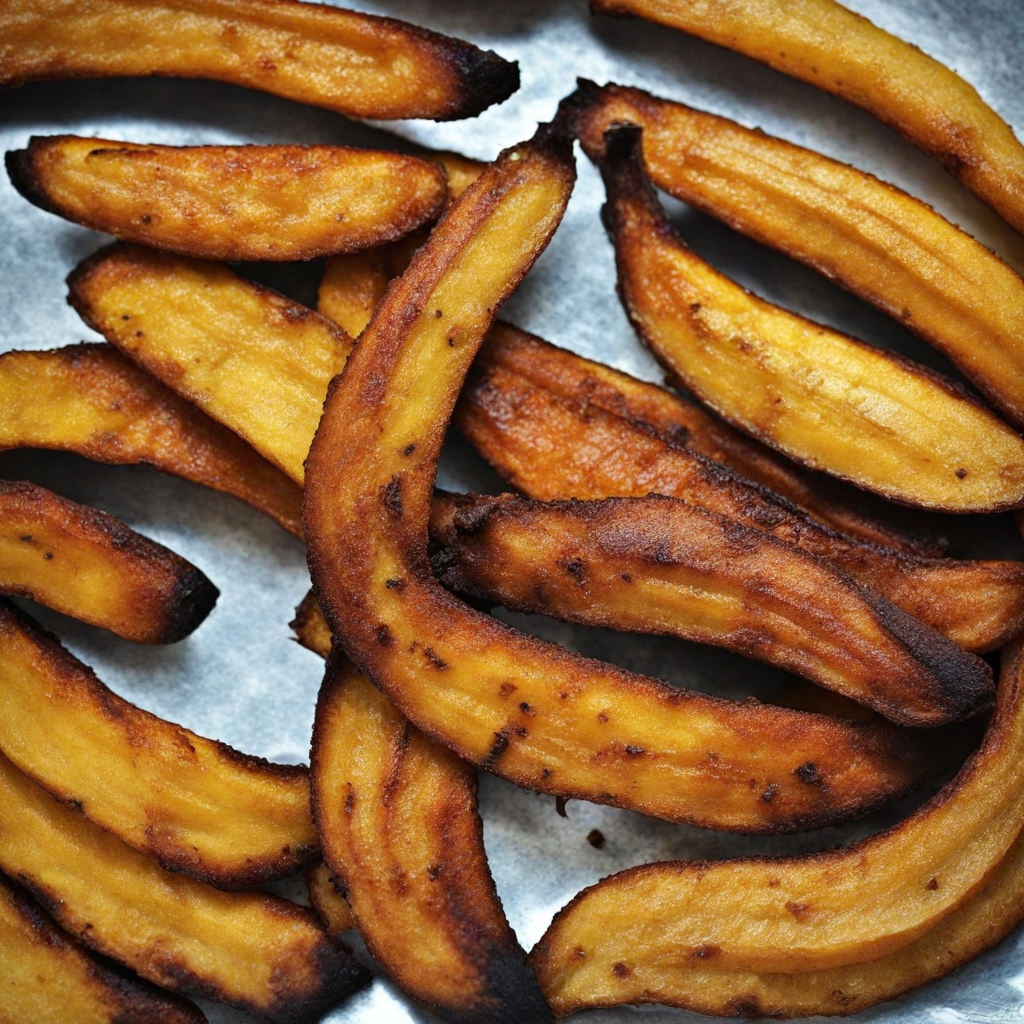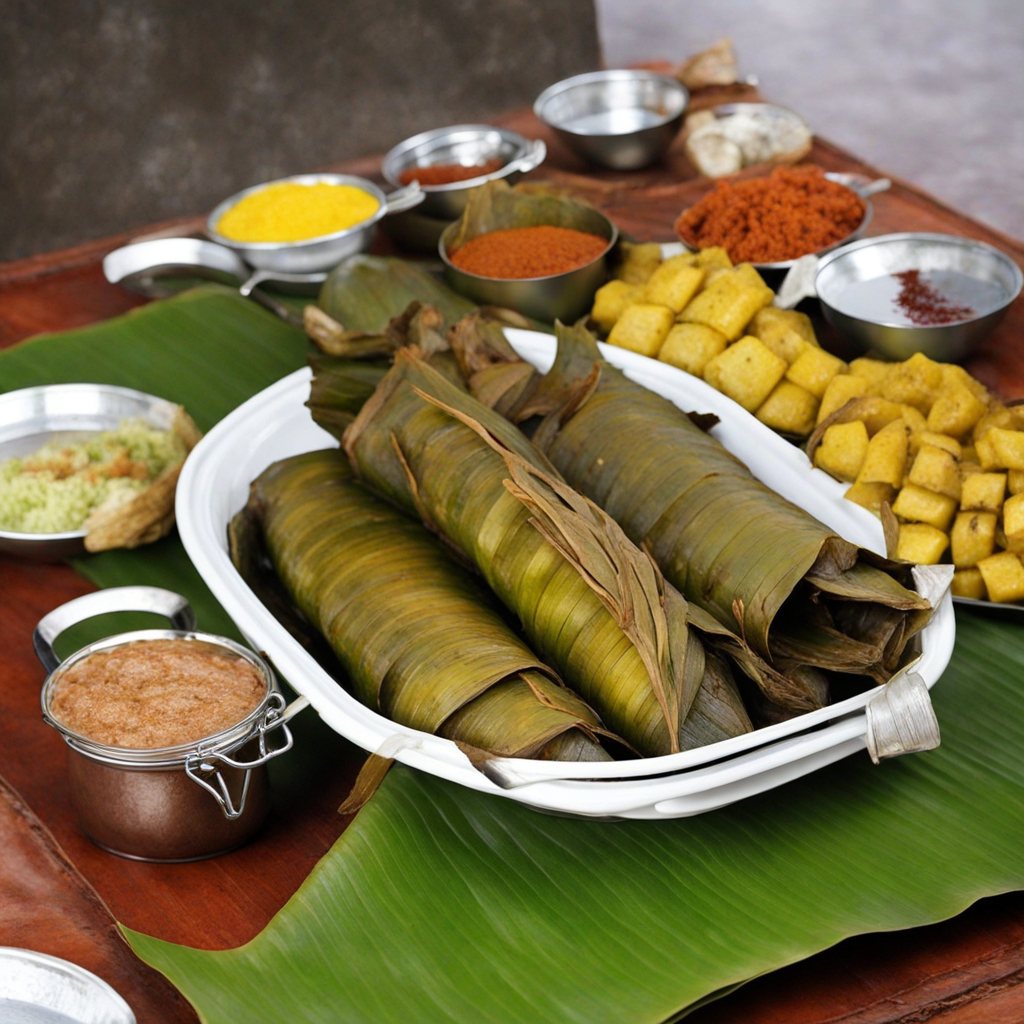Fried Plantains
Fried plantains, a delightful and popular dish in the Central African Republic, are made from the starchy green or yellow variety of the plantain fruit. Unlike their sweeter banana counterpart, plantains are firmer and less sweet, making them perfect for frying. The process begins with slicing the plantains into thick diagonal pieces, which are then fried until they achieve a golden-brown hue and a crispy exterior. The contrast between the crunchy outside and the soft, creamy interior creates a satisfying texture that is both comforting and indulgent. These fried plantains are often seasoned simply with salt, allowing their natural flavors to shine through. They can be served as a snack or a side dish, complementing various main courses, from grilled meats to savory stews. The taste is mildly sweet with a hint of nuttiness, making them highly versatile and enjoyable for both casual meals and festive gatherings. Their appealing aroma and vibrant appearance make them a favorite among locals and visitors alike. In addition to being delicious on their own, fried plantains can also be paired with a variety of dips and sauces, such as spicy pepper sauce or avocado-based creams, enhancing their flavor profile. They are often enjoyed alongside traditional dishes like cassava or beans, providing a hearty and satisfying culinary experience. For those seeking to expand their palate, fried plantains offer a taste of Central African cuisine that is both unique and universally appealing.
How It Became This Dish
The Story of Bananes Plantains Frites: A Culinary Jewel of the Central African Republic Origins: A Journey Through Time Bananes Plantains Frites, or fried plantains, is a beloved dish in the Central African Republic (CAR) and across many parts of Africa and the Caribbean. The origins of plantains themselves can be traced back to Southeast Asia, where they were cultivated for thousands of years before making their way to Africa and the Americas through trade routes. They are closely related to bananas but are starchier and less sweet, making them a versatile ingredient in various culinary traditions. Plantains likely arrived in Africa with traders and explorers, where they adapted to local climates and agricultural practices. In the Central African Republic, plantains became a staple food due to their hardiness, resilience, and ability to thrive in tropical climates. They are not only a source of sustenance but also a cultural symbol—a food that brings people together for communal meals and celebrations. Cultural Significance: More Than Just Food In the Central African Republic, food is deeply intertwined with social and cultural identity. Bananes Plantains Frites is more than just a dish; it is a representation of family, tradition, and community. Fried plantains often accompany stews, grilled meats, and sauces, serving as a comforting base that complements the flavors of the main dish. Plantains have a significant role in traditional ceremonies and celebrations. During weddings, festivals, and communal gatherings, fried plantains are often served as part of a larger spread, highlighting their importance in fostering social bonds. The dish is also favored for its versatility; it can be prepared in various ways—sliced, cubed, or mashed—adapted to fit the occasion or personal preference. In rural areas, the preparation of Bananes Plantains Frites often involves the whole family. Parents teach their children the art of selecting the perfect plantain, peeling it, and frying it to golden perfection. This shared culinary experience not only preserves traditional cooking methods but also strengthens familial ties and cultural heritage. Development Over Time: From Tradition to Modernity As globalization and urbanization have influenced lifestyles in the Central African Republic, the way Bananes Plantains Frites is consumed and prepared has evolved. While traditional methods of cooking still prevail in rural areas, urban centers have seen the rise of street food vendors and restaurants that serve this beloved dish. This transition has opened new avenues for creativity, with variations popping up that incorporate local ingredients or modern cooking techniques. For instance, while the classic version of Bananes Plantains Frites remains a staple, contemporary chefs may experiment with spices, marinades, or even fusion dishes that blend traditional Central African flavors with those from other cuisines. This adaptability reflects a broader trend in global gastronomy, where traditional foods are reinterpreted to cater to changing tastes and dietary preferences. The integration of fried plantains into the diets of expatriates and diaspora communities has also contributed to their popularity beyond the borders of the Central African Republic. In regions with significant Central African populations, such as France and the United States, Bananes Plantains Frites is often served in restaurants, food trucks, and community events, introducing the dish to new audiences while preserving its cultural significance. Nutritional Value and Agricultural Importance Beyond its cultural implications, Bananes Plantains Frites holds nutritional value that contributes to food security in the Central African Republic. Plantains are rich in carbohydrates, vitamins A and C, and dietary fiber, making them a crucial energy source in a region where food availability can be inconsistent. The cultivation of plantains is also economically significant; they are a cash crop for many farmers, providing income through local and international markets. The sustainable farming practices associated with growing plantains often involve intercropping with other crops, which helps maintain soil health and reduces the need for chemical fertilizers. This agricultural approach not only supports local economies but also promotes environmental stewardship, aligning with global efforts to encourage sustainable food systems. Conclusion: A Dish That Unites Generations Bananes Plantains Frites is more than a simple dish of fried plantains; it encapsulates the rich history, cultural significance, and evolving nature of food within the Central African Republic. It serves as a reminder of the importance of community, tradition, and adaptability in the face of change. The dish continues to inspire chefs and home cooks alike, bridging generations and fostering a sense of belonging. As people around the world discover and appreciate the flavors and stories behind Bananes Plantains Frites, they not only enjoy a delicious culinary experience but also connect with the rich tapestry of Central African culture, history, and resilience. Whether served at a family gathering, a festive celebration, or a street food stall, fried plantains remain a cherished emblem of unity and heritage, inviting all to share in the joy of food and the bonds it creates.
You may like
Discover local flavors from Central African Republic







